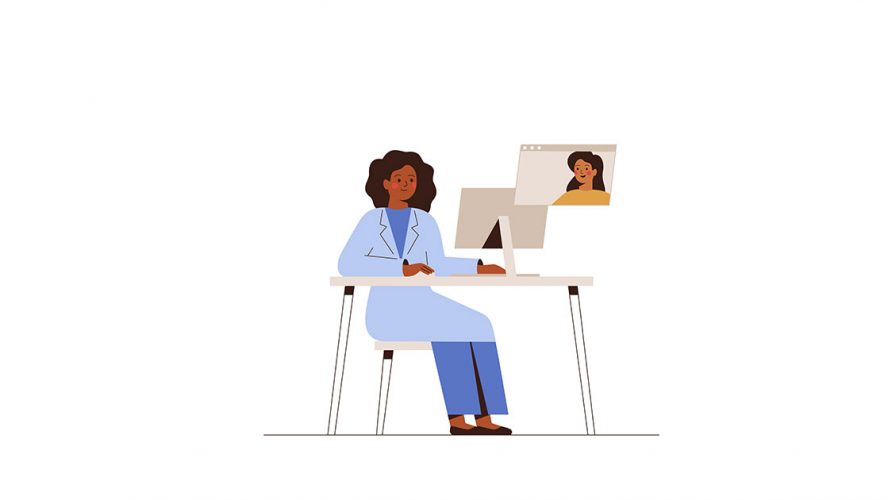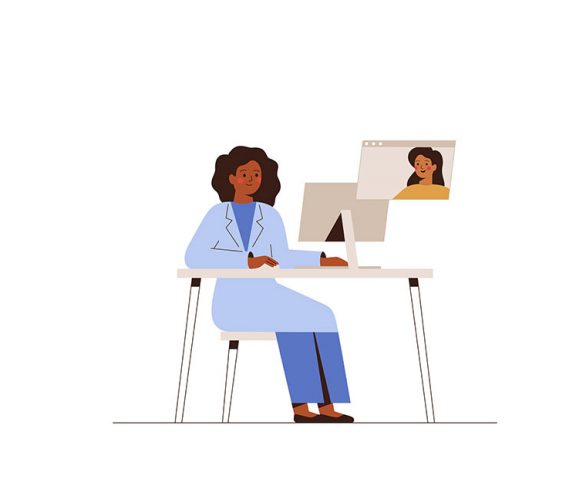Advancements in technology have made our lives better and easier in so many ways. Just think about GPS, online shopping, and the fact that we can make phone calls, send emails, search the internet, and take amazing photos all from a device that fits in our pocket.
Did you know that technology can also help people with Parkinson’s disease (PD) live better every day? Here are three easy ways technology can make a real difference for the PD community:
Telemedicine
Telemedicine refers to any type of electronic communication that provides healthcare without an in-person visit. It has been around for years but experienced a surge of popularity due to the COVID-19 pandemic when people needed medical care but could not safely visit doctors’ offices.
Because the typical office exam for someone with PD is primarily audial and visual (a movement disorder specialist or neurologist will assess speech, facial movement, upper and lower extremity movement, walking, and tremor), this examination can be captured easily on video, making telemedicine uniquely suited for the evaluation of PD.
Telemedicine allows people who live far away from a movement disorder specialist to get the specialized care they need. It can also be helpful for those who have mobility issues and transportation limitations. The American Parkinson Disease Association and other PD groups are advocating to keep telemedicine in place even after the COVID-19 pandemic ends.
Virtual exercise
The explosion of virtual exercise options is making it nearly impossible to have an excuse for not fitting in some physical activity these days. The benefits of exercise for people with PD have been scientifically proven, and exercise is now recognized as a vital part of treating PD.
Thanks to technology, we can now access all sorts of fitness programs right from the comfort of our own homes. There is a wide array of PD-specific exercise and movement classes available online. As long as you have internet access, you can find a class to take no matter where you are. Some organizations, like the American Parkinson Disease Association (APDA), have virtual events calendars that show you all of the upcoming classes you can join, free of charge.
There is data that indicates tai chi, yoga, and dance offer health benefits for people with PD, so you may want to try one of those, or you can try another exercise type that piques your interest. The best exercise is the one you’re actually going to do, so give a few different types a try to see which you like best.
Mobile apps
Apps on your smartphone aren’t just for finding directions to the hot new restaurant in town or passing the time — they can help people with PD, too.
There is a variety of fitness tracker apps available to help you monitor your physical activity. Exercise is highly beneficial for people with PD, so if you need help staying motivated and on track, a fitness app might be for you. There are many to choose from based on the type of exercise you prefer and your level of fitness.
Experience care that fits your lifestyle, care that is connected, optimized and personalized.
Another helpful app is the APDA Symptom Tracker. Each person’s PD symptoms are different, and this app was specifically designed for people with PD. It helps you keep track of symptoms — including tremors, rigidity, balance, and non-motor symptoms — and create a report to share with your care team. It has an interactive medication tracker where you can enter your specific medications and doses, and the time of day you take them, which helps identify opportunities for better symptom management. There is also a Spanish version of the app.
Finally, meditation apps can help manage depression and anxiety, which are common symptoms of PD. Apps like Calm and Headspace offer a way to engage with different meditative practices to ease anxiety and depression.Life with Parkinson’s disease can be challenging, but there is so much you can do to improve your life and make daily activities easier. Technology is just one element that can help you live life to the fullest.
For more information and support, contact the American Parkinson Disease Association at www.apdaparkinson.org, or 800-223-2732.

